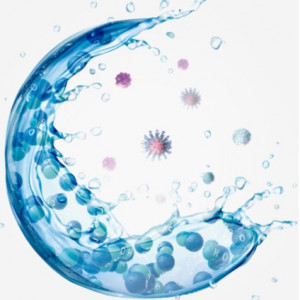| Panasonic Corporation |

| Registration Date | 31 Jan 2021 |
| Revision Date | 31 Jan 2021 |
| Share |
Environment Air Remediation
Air Conditionernanoe X particles, which are smaller than steam particles, penetrate the deepest parts of fibers, allowing for highly effective deodorization. 1~8 OH radicals reach the sources of the odours themselves and suppress them until they are barely noticeable. nanoe X envelops and inhibits the activity of airborne and adhered bacteria and viruses. Various types of airborne mould found inside rooms are inhibited. Furthermore, even adhered mould is enveloped and inhibited by nanoe X. In addition to allergens from sources such as dog/cat dander, mite faeces/carcasses, and airborne mould, other major allergens. Nanoe X is effective in inhibiting a variety of pollens globally all year around. The inhibition effect has been confirmed for the 13 varieties shown below, including those found in Europe and North America. Breakdown/inhibition of Hazardous Substances Known to Be Found in PM2.5. Nanoe X combines with natural sebum to coat the skin, leading to smooth, well-hydrated skin. Furthermore, the abundant moisture found in nanoe X hydrates the hair, contributing to straighter, sleeker hair.
Nanoe™ X is a technology that collects invisible moisture in the air and applies a high voltage to it to produce hydroxyl radicals contained in water. Nanoe™ X particles, which are smaller than steam particles. nanoe™ X are nano-sized electrostatic atomized water particles with 4.8 trillion of OH radicals.
Hydroxyl radicals inhibit the growth of pollutants such as bacteria and viruses. They are characterized by being strongly oxidative and highly reactive, hence a short life span. Contained in tiny water particles, nanoe™ X has a long life span and can spread over long distances. It has an inhibitory effect on both airborne and adhered substances.
In September 2020, Panasonic verified, in collaboration with Texcell*2, the inhibitory effect of nanoe™ X technology with the benefits of hydroxyl radicals on the novel coronavirus in a small test space of 45L using a nanoe™ X generator. For further investigation, Panasonic conducted additional tests using a Panasonic air conditioner equipped with nanoe™ X technology in a larger test space.
Panasonic has been researching nanoeTM technology since 1997. Over the past 20 years, Panasonic has verified its effectiveness in a variety of areas, including inhibiting pathogenic microorganisms (bacteria, fungi, and viruses) and allergens, and breaking down PM 2.5 components that have adverse effects on the human body*2. Panasonic plans to continue to pursue the potential of nanoe™ X technology to address possible risks associated with air pollution such as new pathogenic microorganisms, to create healthy environments for people around the world.